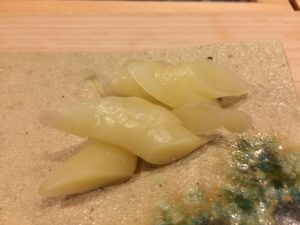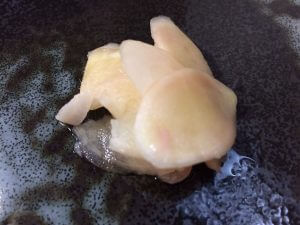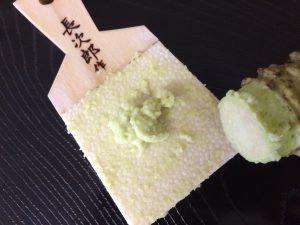The ginger served in sushi restaurants is called “gari”. Some people eat it endlessly, thinking that it’s free no matter how much they eat.
 However, at high-end or traditional sushi restaurants where artisanal gari is made in-house, it may be included in the bill. This is because crafting delicious, high-quality gari requires considerable time, skill, and labor, and the cost of fresh, domestic ingredients can be so high that serving it for free would result in a financial loss.
However, at high-end or traditional sushi restaurants where artisanal gari is made in-house, it may be included in the bill. This is because crafting delicious, high-quality gari requires considerable time, skill, and labor, and the cost of fresh, domestic ingredients can be so high that serving it for free would result in a financial loss.

In contrast, the majority of sushi restaurants use commercially produced gari, which is mass-produced by large food processing companies, many of which have factories in China or Southeast Asia. These manufacturers typically soak large amounts of ginger in an industrial pickling solution containing salt, vinegar, acidulants, sodium saccharin, potassium sorbate, and sodium metabisulfite.
Although the quality of this mass-produced gari has improved in recent years, some versions have crushed and may be artificially colored with plum vinegar to enhance their appearance.
On the other hand, homemade gari, especially when made in Japan, is prepared with a more delicate and refined approach. It is typically seasoned with rice vinegar and salt, with sugar used sparingly to provide a gentle sweetness. The result is crisp, chewy, and flavorful, retaining the natural pale yellow color of fresh ginger without artificial coloring. During the early summer season, when young ginger (also known as shin-shoga) is harvested, the price of domestic ginger can soar to several thousand yen per kilogram. Due to its high water content, 1 kilogram of raw ginger yields only about 300 grams after squeezing.
Making high-quality, handcrafted gari is both cost-intensive and laborious, as sushi chefs often prepare a year’s supply in advance. Once made, it must be stored in a refrigerator dedicated exclusively to preserving the freshness and quality of the gari. When you consider the cost, effort, and culinary craftsmanship involved, it becomes clear that homemade gari is far more expensive and distinctive than its imported counterpart. In fact, serving authentic, house-made gari is one of the key elements that sets high-end sushi establishments apart from the rest. And even if you’re not charged for it, eating too much can dull your taste buds, affecting your appreciation of the sushi’s delicate flavors.
How to Make Gari (Pickled Ginger)
-
Slice fresh young ginger thinly.
-
Place the slices in boiling water.
-
Once the water returns to a boil, remove the ginger.
-
Drain the slices in a colander.
-
Spread the ginger out on a bamboo sieve (or similar) and press it firmly while still hot to remove excess moisture.
-
Soak the ginger in a seasoned vinegar mixture for half a day to a full day.
Vinegar Mixture (for 4kg of ginger):
-
3.8 liters of rice vinegar
-
1.5 kg of sugar
-
300 grams of salt
Related contents: CONDIMENTS FOR SUSHI
We hope this information will be helpful.

Revision date: June 10, 2025
Share this article
 On the other hand,
On the other hand,